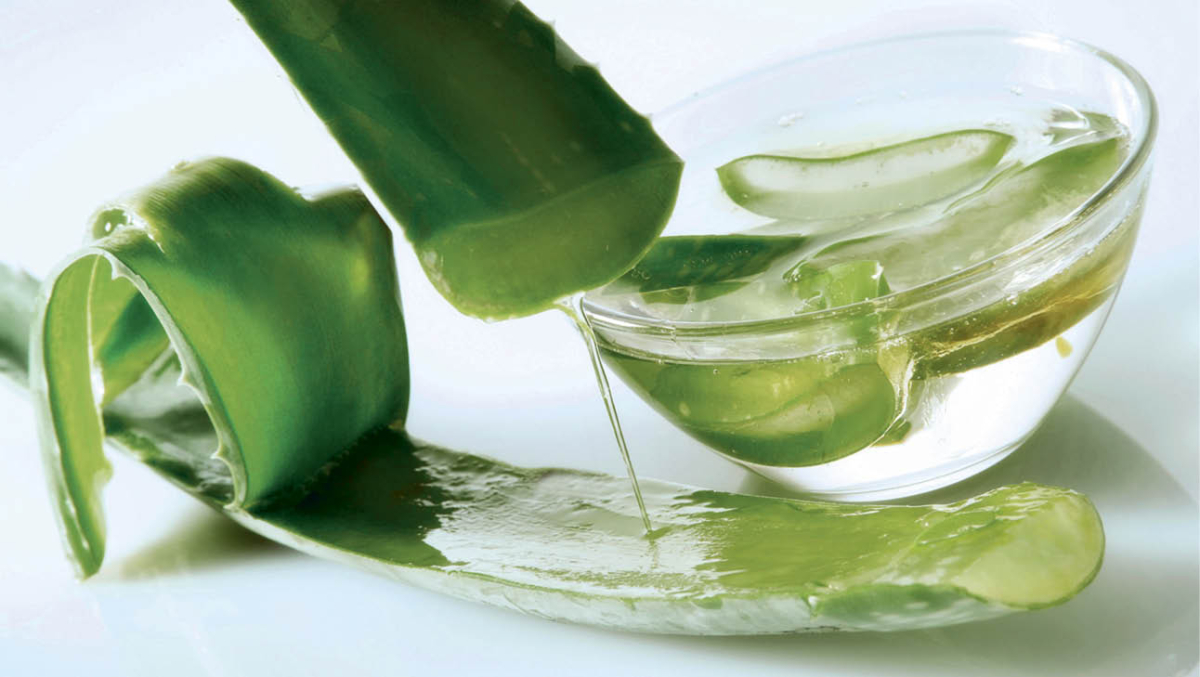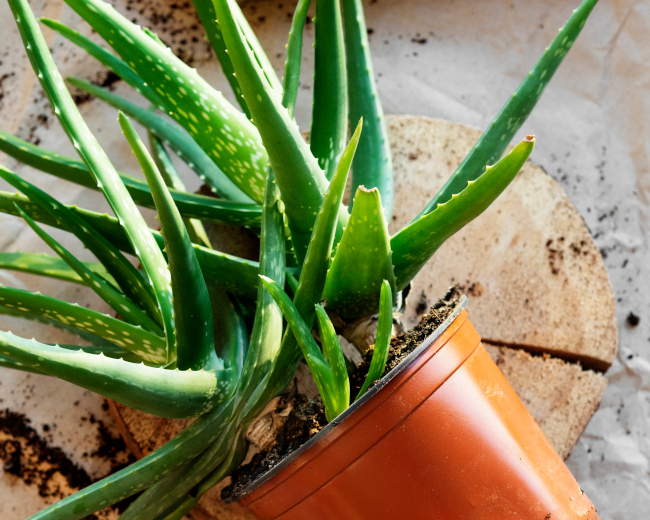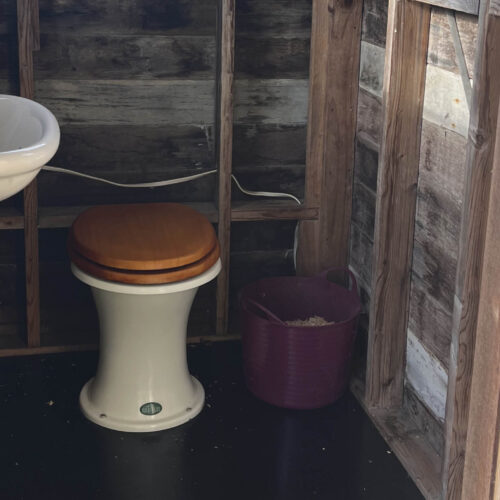Grow your own aloe
2022-08-22T07:11:52+10:00
Penny Woodward looks at the many practical uses of soothing aloe vera and how to grow and harvest this succulent.
Aloe vera is one of the most useful herbs I grow, and it comes into its own in spring and summer. It has a long history of use for skincare and problems, starting with the Egyptian ruler Cleopatra (c. 69-30 BCE), who used aloe to keep her skin beautiful.
Roman naturalist Pliny the Elder, author of the encyclopedic Naturalis Historia, cited its use externally to heal wounds, bruises and irritations. More recently it has been used to heal and soothe radiation therapy burns.
There are up to 500 Aloe species of different sizes, shapes and flower colours available. They make excellent garden plants, but quite a few, such as bitter aloe, have corrosive or poisonous sap in their leaves. This means if you want to use the sap, you must ensure you are growing true Aloe vera, so get it from a reliable source – whether fellow gardener or nursery.
Some other aloes have medicinal uses in different cultures, but Aloe vera is the most commonly and widely used.
Growing
This succulent perennial grows as a cluster of very fleshy thick leaves, with prickly margins and no stems; sometimes the leaves have white spots. The flowers grow in erect spikes and are orange/yellow.
Aloes typically need hot, dry conditions and very good drainage, making them useful for rockeries and dry climate gardens. However, with excellent drainage, they also do well in tropics. If you live in a cool climate and have heavy soil, then you may only be able to keep Aloe vera alive if you grow it in a large shallow pot in a warm microclimate (Aloe vera does well in pots and even hanging baskets).
Plants that experience prolonged wet periods may rot at the base and die. Another killer is heavy frost. Conversely, I have found that too much intense dry heat will cause leaves to fade and brown, so some protection from the hot, midsummer, afternoon sun is beneficial.
Starting new plants
Leave plenty of space around your first plant, because as it grows, the offsets produced around the base of the parent plant will quickly grow into full-sized plants themselves, with more offsets, eventually becoming a sizeable clump.
Grow new plants by carefully removing and replanting the small offsets, with their roots intact. This can be done at any time of the year but is most successful in spring.
Harvesting and use
The inner leaf pulp or gel is the part used. A few people, particularly those who have a latex allergy, may have skin that is sensitive to the gel. If you have never used aloe gel, then test a small patch of skin before using it more widely.
You can just cut off a short section of leaf and rub the gel onto the affected area of skin. To harvest more gel, cut off as many leaves as needed, slice them lengthwise and scrape out the gel. Avoid collecting any green or fibrous bits from too close to the leaf skin as some people may be sensitive to these.
Use the gel within 24 hours. If you want to keep it for later use, perhaps to take travelling, then cut several leaves, split them and scrape out the gel into a small saucepan. Bring to the boil and simmer gently to a thick paste. Once cool, spoon into a small clean jar and store in a cool place. Refrigerate once opened. This will keep for several months. Use in the same way as you would fresh gel.
Aloe gel uses
Aloe vera has been used for centuries in many different cultures. When researching our community gardens book, Pam Vardy and I spoke to people from more than 20 different cultures and found that nearly all grew Aloe vera, using it in similar ways. One El Salvadorian woman rubbed fresh gel on her face saying ‘It improves your skin so that you look lovely.’ Tai from Vietnam used aloe vera to treat itchy skin, while Maria who immigrated from Greece, smoothed the gel over minor scratches and grazes.

Aloe vera is particularly useful for treating minor burns, including sunburn. With any burn, I always reduce the heat by soaking the affected area in cold water first. If the burn is serious, seek medical help. If minor, then after soaking, rub a thin layer of gel over the reddened skin. Leave on for an hour, then wipe off gently with a clean wet cloth and reapply more aloe if needed.
More generally, you can gently rub it onto bites and stings to relieve pain and reduce swelling. As well as helping to heal minor scratches and grazes, it also eases fungal infections such as athlete’s foot. Smooth it onto dry skin to soothe and moisturise, and on varicose veins and haemorrhoids to reduce painful swelling.
We like to encourage OG readers to be creative when it comes to growing, harvesting and organic living. For more ideas visit here. You can also subscribe to the magazine and have it delivered to your door!
This article was first published in the print copy of our Spring 2019 issue (OG 112).







